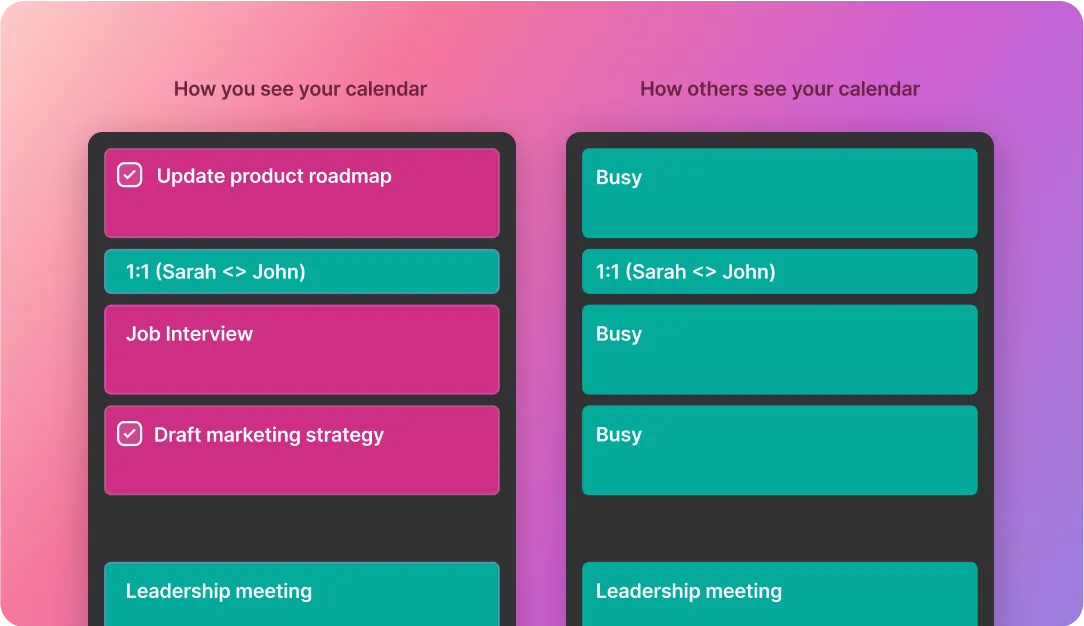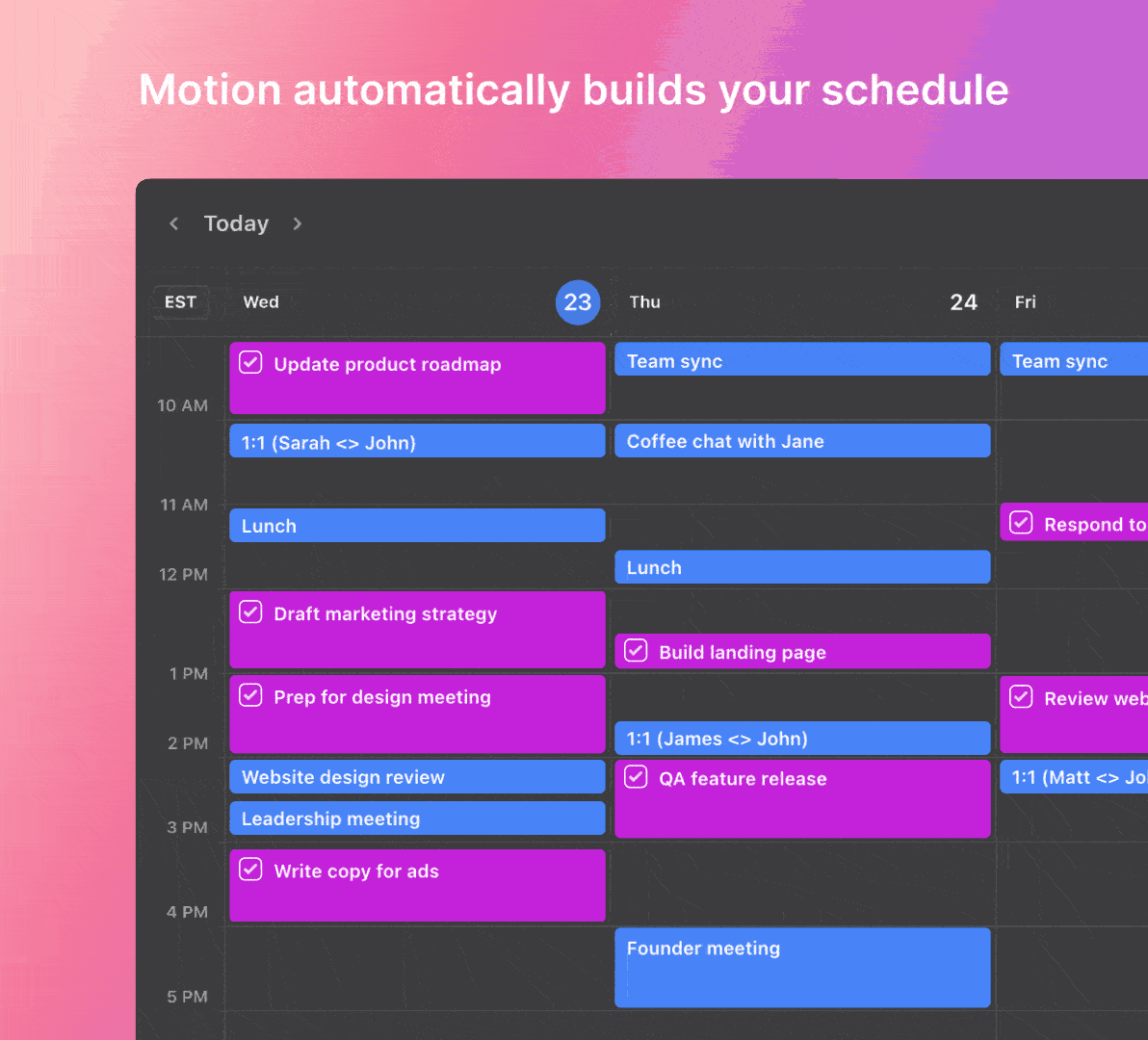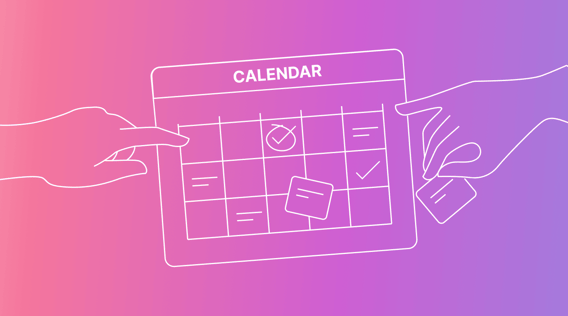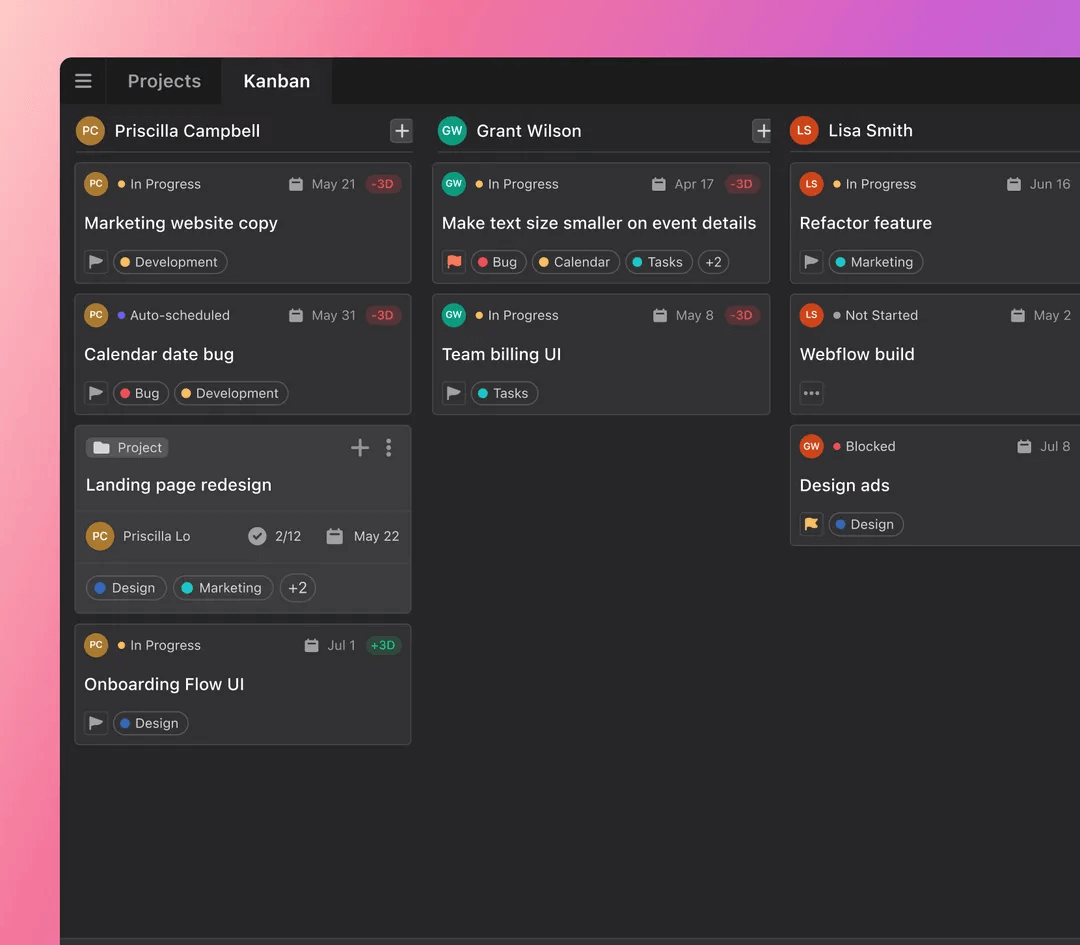Employee scheduling is one of those tasks that looks simple until you’re in the thick of it, trying to juggle availability, skill sets, and business needs simultaneously.
Add in the complexities of today’s remote or hybrid work models, and you’re grappling with employee schedules across different time zones.
This guide offers the practical tips you need to create a schedule that works well for both your team and your business goals.
Why is scheduling employees important?
Getting employee scheduling right helps ensure a happy workplace, satisfied customers, and a business that does well.
Enhances operational efficiency
Having the right people in the right places at the right times is key to maximizing productivity. Efficient scheduling aligns employee strengths with task requirements. Each task is handled by someone with the necessary skills.
This strategic alignment not only boosts efficiency but also helps minimize labor costs by preventing both overstaffing and understaffing. The result is a more agile and responsive workforce that can better meet the business’s needs.
Provides consistency
Consistent scheduling improves job satisfaction and performance. When employees have a stable routine, they know what to expect and can better manage their time and responsibilities as a result. Moreover, employees become familiar with their colleagues’ work patterns, facilitating more effective teamwork and collaboration.
Consistency in scheduling also means customers can always count on getting the same great service and support each time they interact with your business.
Helps meet customer demands
Imagine a busy store that’s short-staffed. In this scenario, you might miss out on sales not because you don’t have customers but because you’re not prepared.
Smart scheduling aligns your team’s availability with rush hours, making sure you’re ready for the influx. This readiness not only allows your business to respond swiftly to customer needs and inquiries but also builds a foundation of trust and a reputation for being reliable.
Anticipating when your customers are most likely to need your services and ensuring that you have enough staff on hand help to minimize your chance of missing out on sales and enhance the overall customer experience.
 |
4 types of employee schedules
Let’s dive into four common types of employee schedules you can consider using for your business:
1. Fixed schedules
Fixed schedules are all about stability and consistency. An example is the traditional 9-to-5 setup, where employees work the same hours and days each week. It’s straightforward and predictable, which makes it easier for employees to plan their personal lives around work.
Fixed schedules are great for businesses that value routine and regularity and employees who prefer set routines.
2. Flexible schedules
Flexible schedules put the power in the hands of employees, allowing them to adapt their work hours to fit their personal lives. This could mean varying their arrival and departure times or even choosing which days they work and which days they don’t.
Flexible schedules are a fantastic way to support work-life balance and are especially appreciated in workplaces that can accommodate variability in staffing.
3. Shift work
Shift work is designed for businesses that run 24/7, including security operations, transportation hubs, and factories. Employees work in rotating shifts, covering different parts of the day and night.
A shift schedule might rotate weekly, bi-weekly, or monthly to ensure fairness for all employees.
4. On-call schedules
On-call schedules are a staple in many industries that deal with emergencies or unpredictability, like healthcare or IT support. These schedules balance downtime with availability, where employees are not working at the office but must be ready to come in if needed.
An on-call schedule is a flexible scheduling approach. It provides a safety net for businesses that operate in dynamic environments.
Checklist for a great employee schedule
Use the following checklist to create a schedule that balances your business goals and employee needs:
☑ Alignment with team availability
A great schedule starts with knowing when your team members are available. The goal is to find that sweet spot between their personal preferences and the business’s operational needs.
In the hybrid work era especially, aligning schedules to accommodate different working styles and locations is crucial. Your schedule should effectively utilize all team members, no matter where they are based and what time zone they’re in. They should be in sync when it matters, working in a way that suits both the company’s needs and theirs. Getting this right means you’ll be halfway to an effective schedule that everyone can get on board with.
☑ Clarity and accessibility
A good schedule needs to be more than just a list of times — it should clearly outline your expectations for each shift. What’s the main task? Who’s the go-to person for it? Where should they be working?
A transparent and easily accessible schedule reduces confusion and helps to build trust between staff and management.
☑ Employee input
Employee input is gold when it comes to scheduling. Asking for your employees’ preferences, availability, and desired hours can lead to a more efficient and happier workforce.
 |
Eighty-two percent of employees expect employers to support their work-life balance. As such, it’s important to actively seek and integrate their input to show them that you respect their outside commitments and will work to keep their morale high.
☑ Flexibility for change
Did you know that 51% of enterprise employees crave complete flexibility in their schedules?
For many, the best schedules are those that can adapt to changes, such as swaps or sudden absences, without causing major disruption.
Schedules should also be designed to respond to fluctuating business demands. For instance, businesses should include strategies for scaling their workforce up or down as needed.
☑ Compliance with labor laws
Be mindful of overtime, rest periods, and required breaks. Staying on top of labor laws will help you avoid costly violations.
Conducting periodic audits of scheduling practices not only helps maintain compliance but also serves as a checkpoint for making adjustments in response to changing laws. A compliant schedule is a safe schedule for both a business and its employees.
8 tips for creating an effective employee schedule
Want to create an employee schedule that ticks all the boxes listed above? Here are eight strategies to guide you through the process:
1. Plan schedules based on business needs
Once you’ve pinpointed your business’s peak hours, align your employees’ shifts to coincide with those times so that you’re always fully staffed during busy periods and no one has to take on extra shifts. This will help you maintain a high level of service and efficiency.
Additionally, be proactive in considering other factors, like seasonal trends, upcoming promotions, and historical business performance. These insights will allow you to anticipate shifts in demand and adjust your staffing levels accordingly.
For example, during major events like Black Friday, you might need additional staff to handle the inevitable surge in customers.
Incorporating these elements into your planning will help you manage customer expectations and use your workforce optimally. Your scheduling, then, becomes a tool that adapts to the changing needs of your business.
2. Communicate schedules in advance
No one likes last-minute notice, especially when it comes to work schedules.
So, always make sure your employees receive their schedules ahead of time. Adequate notice will allow them to plan their personal commitments around their work, reducing stress and increasing their job satisfaction.
Early communication of schedules also benefits management since it gives you more time to identify and resolve potential conflicts before they become bigger issues.
Furthermore, keeping employees in the loop with timely updates can significantly boost their sense of inclusion and belonging in the workplace. Employees who feel included in workplace communication are almost five times more likely than those who feel excluded to report experiencing increased productivity.
3. Consider employee strengths and preferences
To optimize your team’s overall performance, match tasks and schedules with each team member’s unique strengths, skills, and work styles. That way, you’ll make sure tasks are completed efficiently and your employees are engaged in the work they’re good at.
For example, give detail-oriented tasks to employees who like meticulous work or place a particularly sociable person in a customer-facing role.
Acknowledging employee preferences for certain shifts or roles is equally important. For instance, imagine an employee who prefers late shifts. Instead of making them struggle through early morning hours, scheduling them to meet their preferences can greatly enhance their job satisfaction and productivity — which, in turn, can lead to a significant reduction in turnover.
4. Ensure visibility across team schedules
Transparency boosts communication and collaboration at work. A recent study highlighted two important points: first, senior leaders need clear visibility of schedules for strategic planning, effective teamwork, and coordination. Second, employees work together more efficiently when they know their peers’ availability and preferences.
To achieve this, keep a centralized schedule that everyone on the team can access easily. Having a real-time view of the whole team’s schedule is especially helpful for hybrid or remote teams, as it makes it simpler to arrange shifts or role changes. It also helps you quickly spot staffing gaps, overages, and periods of heavier workloads.
Tools like Motion provide clear visibility into a team calendar and help you design a schedule that respects everyone’s time. With Motion, you’re always up-to-date on who’s available and what they’re working on, helping keep the entire team coordinated and on track.
5. Establish clear scheduling policies
Your policies should clearly define details like how shifts are assigned, how employees can swap shifts or tasks, and how they can submit time-off requests. Putting these guidelines in place makes sure everyone is treated fairly, and there’s no confusion about how things work.
These policies should also encourage the sharing of shifts and tasks fairly and provide clear instructions on handling common scheduling problems. This will help to make the entire scheduling process more efficient.
Everyone on the team should understand these policies inside and out.
6. Make it easy to make last-minute changes
Your whole day shouldn’t be thrown off track just because something unexpected pops up. A reliable schedule incorporates flexibility for last-minute changes. Each employee should have easy access to their schedule through a centralized system that’s always up to date. Real-time updates keep everyone informed about changes as they happen.
Motion rebuilds a new schedule around sudden schedule changes. Moreover, with Motion, you get the best of both worlds — your personal and work calendars integrated as one. It’s super easy to access your schedule whenever you need to and share only what you want to with your team.
 |
7. Use effective scheduling software
Incorporating employee scheduling software or employee scheduling apps into your workflow could be the best decision you make this year. Scheduling software streamlines the hassle of managing calendars and appointments, saving time, reducing errors, and providing analytics to inform better scheduling decisions.
Motion stands out in this realm. We don’t just organize your team schedules — we optimize them. Another standout feature is automatic task delegation, which considers each team member’s strengths and availability to build the perfect schedule.
 |
8. Evaluate and refine the schedule
Regular employee schedule evaluations help you assess the current schedule’s effectiveness by measuring it against performance metrics and employee feedback.
The insights from these reviews should guide your adjustments and revisions to the schedule. Even small tweaks can make a big difference in how smoothly your team operates. Shifting your team’s start time by just 30 minutes could significantly reduce overlap and improve productivity.
It’s equally important to create an environment in which employees feel comfortable sharing their thoughts on the schedule. Ongoing dialogue with your team can help you identify and address any issues quickly, allowing for timely adaptations that can enhance both employee satisfaction and workplace productivity.
Optimize your employee scheduling with Motion’s AI-powered platform
Motion simplifies the scheduling process, aligns tasks with team availability, and automates task delegation. This makes keeping your team organized and productive effortless.
Ditch the scheduling chaos. Try Motion for a smarter, more intuitive way to schedule.






